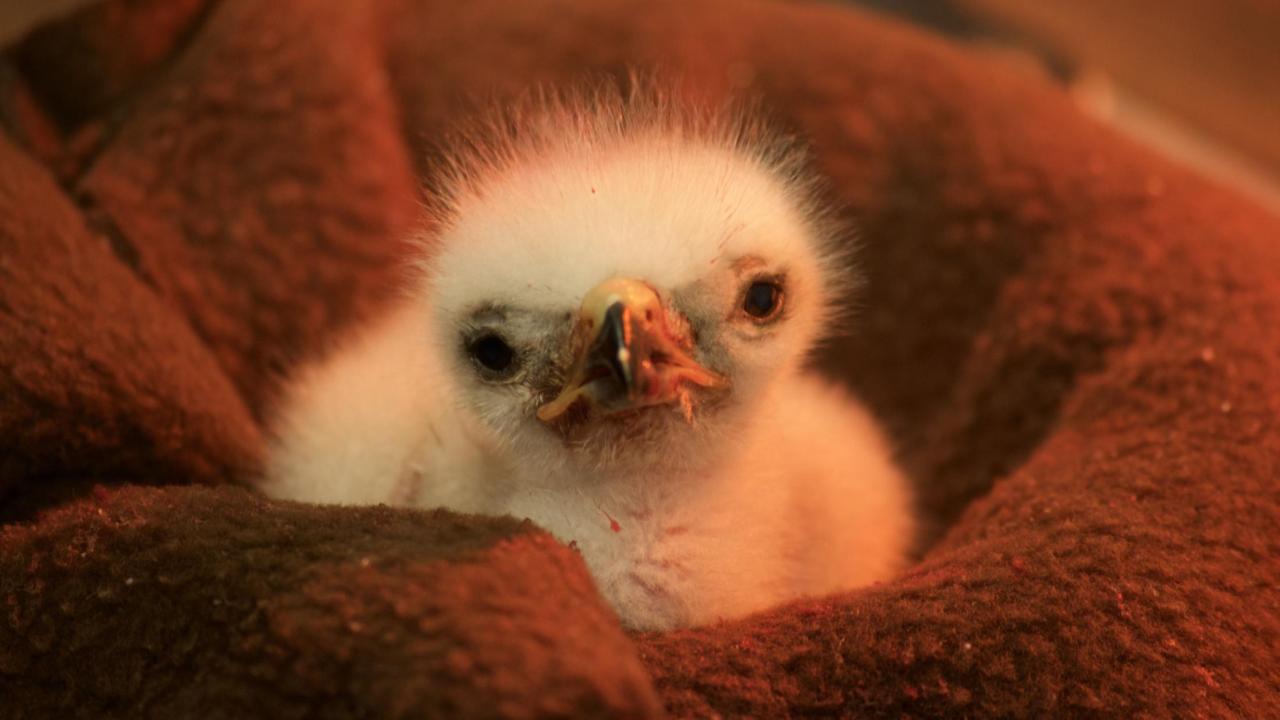
Rescue: Is This Baby Really an Orphan?
What to do
Make sure the chick needs help! When in doubt, ask.
Every year, the California Raptor Center receives dozens of baby raptors that have fallen out of their nests or are found in compromised circumstances. Though some of these chicks would not survive without human intervention, not all of them need our care. Some are found on the ground, unharmed and healthy, and brought in by people who mistakenly believe they are orphans. We make every effort to return these healthy babies to their nests, keeping an eye on the site until we are sure the parents are around and attentive.
When re-nesting is not possible—predators are nearby; a nest has been destroyed; there is an injury; parent birds are not observed—we keep the chicks in our nursery.
If you are unsure whether or not a chick needs rescue, you can refer to this guide on our website or call the California Raptor Center at (530) 752-6091.
What Not To Do
Do not try to raise a raptor chick yourself.
Baby raptors grow extremely rapidly. Sometimes well-meaning people find a baby raptor and attempt to feed it and raise it. Even if they are successful, and feed the proper diet, that bird is nearly always imprinted on humans, which means it will not be able to live a normal life in the wild. But most often, people feed young raptors pet food, beef heart, or hamburger – and within a few days, the lack of calcium and other minerals will have destroyed the bird's bones for life.
So remember – when you find a baby raptor, make sure, first, that it is truly in need of help. And if it is, get it to the California Raptor Center or to another licensed, experienced rehabilitation organization.* That way, your act of kindness in rescuing a baby in need is lawful and may eventually lead to a natural life for a lucky young bird.
* A list of licensed groups is available from the CA Department of Fish and Wildlife, and a shorter list of licensed groups local to the Sacramento region is available here
Thank you to Sallie Reynolds for the original text of this article and Lis Fleming for her edits and updates.

